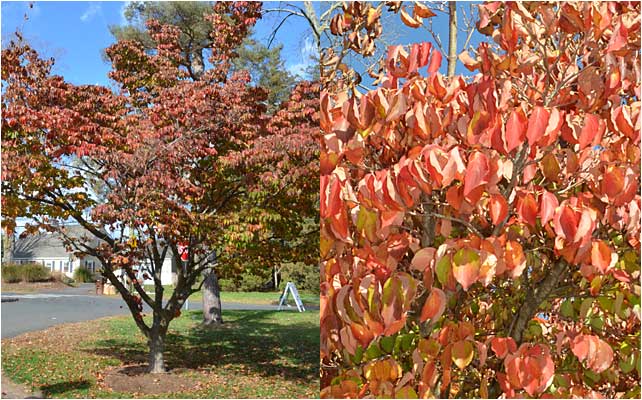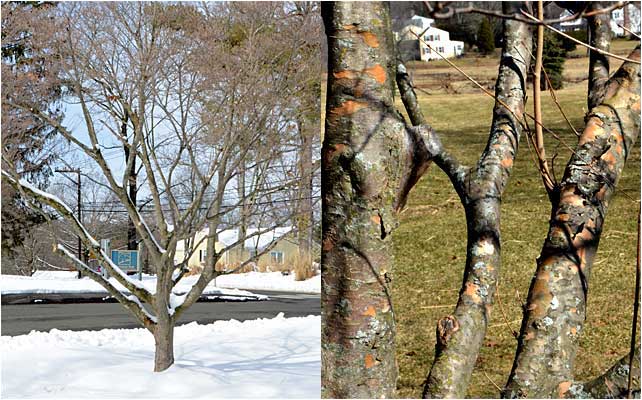2. KOUSA DOGWOOD, Cornus kousa

The Kousa Dogwood is widely planted in CT but is native to Korea, Japan, and China. It is a small tree, rarely exceeding 25 - 30 ft. It seems to excel in all seasons with winter bark, stunning spring foliage, attractive summer fruit, and wonderful fall color.
SPRING

Cornus kousa flowers spectacularly in spring. It typically opens a bit later than our native dogwoods, and keeps its bloom for a longer time. Planted by Douglas Jackson, Westmoor Arboretum, 2012.
BRACTS

While the spring foliage is very showy, the actual flower of the Kousa Dogwood is small, green, and located at the center of the bloom. The four white "petals" that surround the flower are actually called bracts. Bracts are designed to attract pollinators.
FRUIT

The fruit emerges in the summer, typically growing up from the canopy for the first several weeks. As the fruit matures, it turns red. When fully mature (below), the fruit is raspberry-like in color, edible, and a magnet for birds.

FALL

This Dogwood will show a range of dramatic colors over the course of a typical fall. When the leaves first turn, they are sharply orange but shift to a darker red later in the season.
WINTER

Winter showcases the tree's compact form and graceful branching, while the exfoliating bark provides a welcome bit of color to drab winter days... Exfoliating bark is a natural process that allows trees to quickly recover from injury or environmental stress.